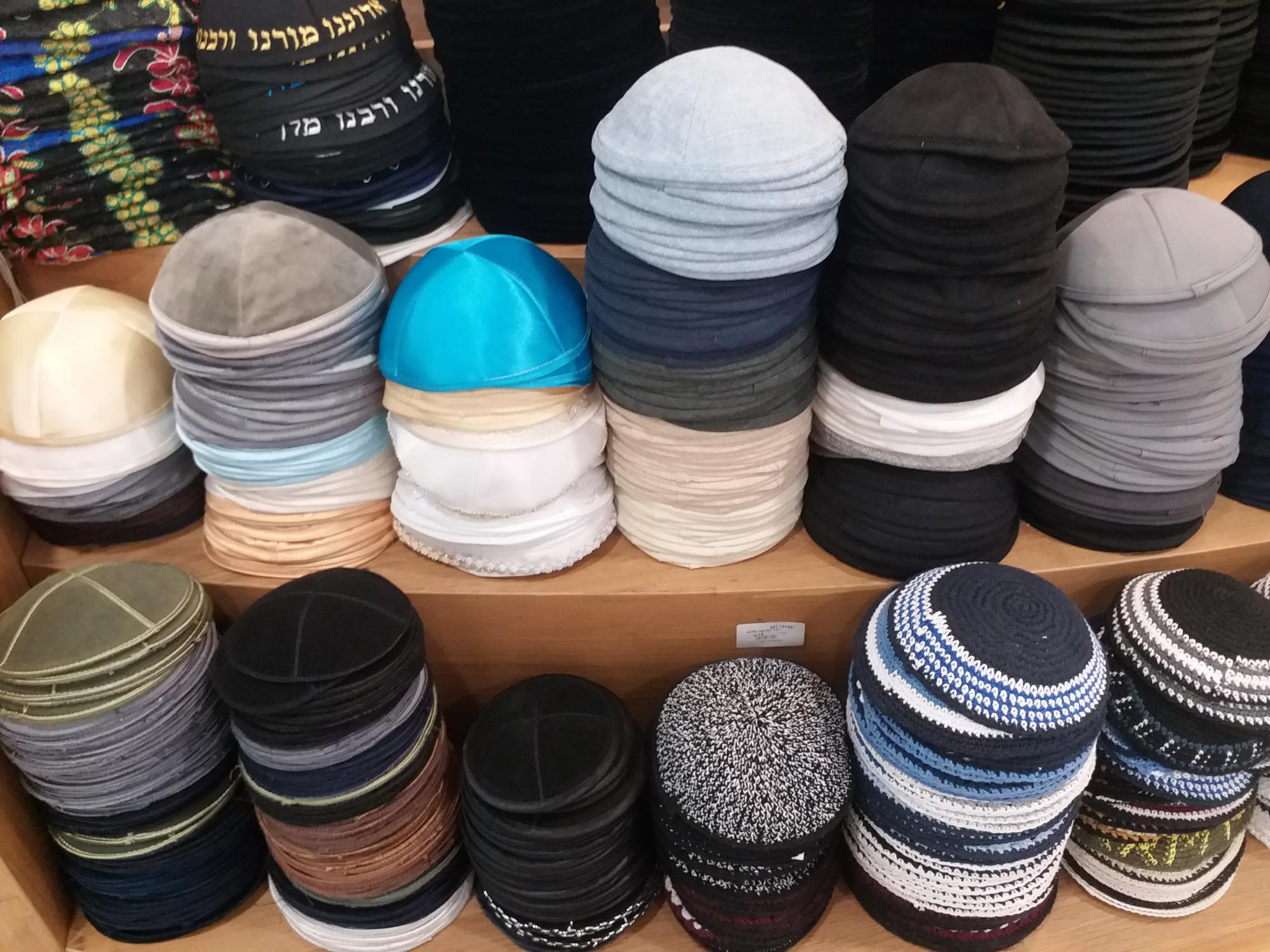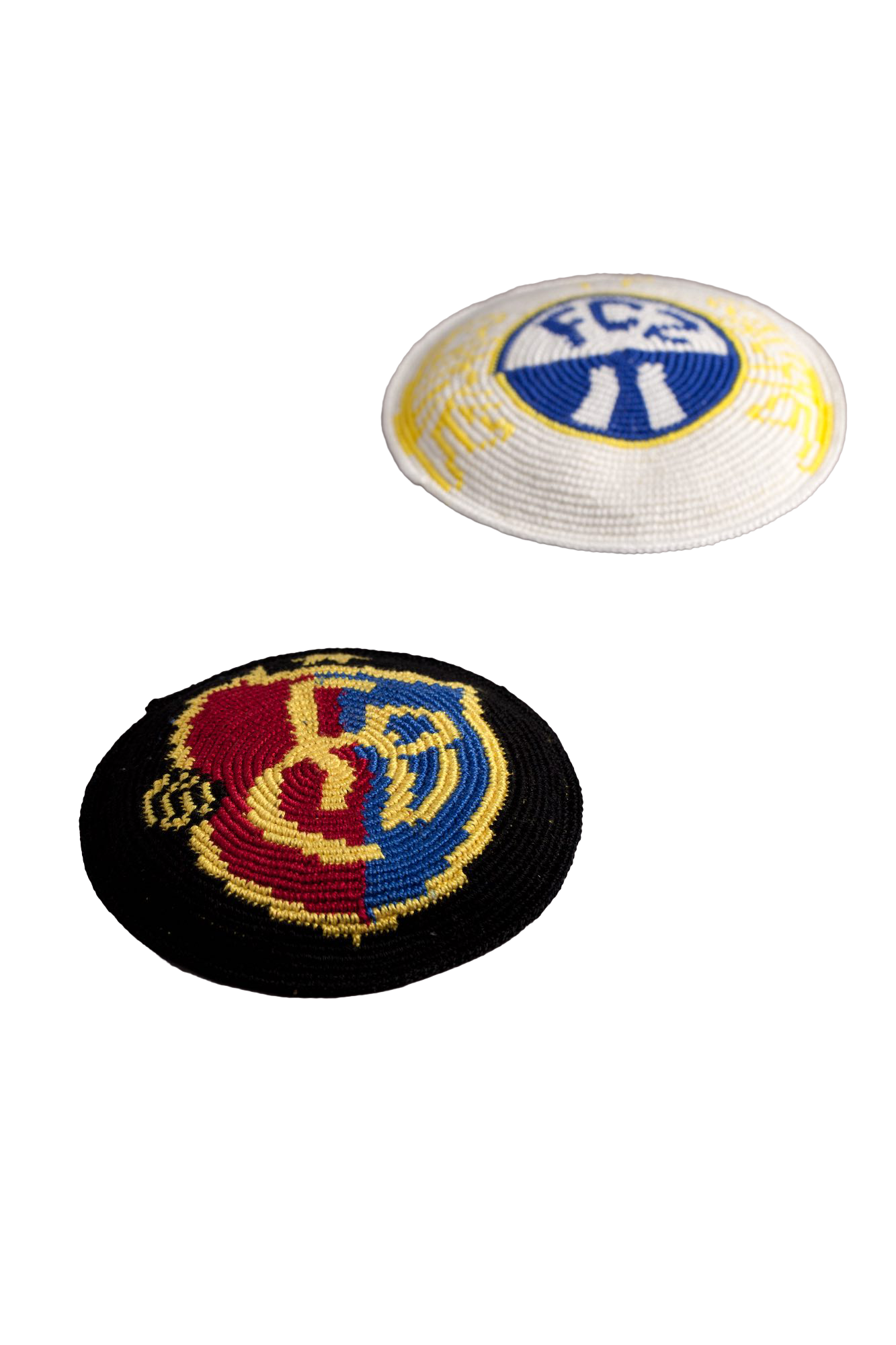
Käppchen, traditionell zur Erinnerung an die göttliche Gegenwart sowie während der Gebetszeigen getragen.



An Rosch Haschana und Jom Kippur wird eine weiße Kippa sowie weiße Kleidung getragen.
The various meanings of the kippah.
Arnon, Dancho. Kova’im Ba-Rosh: Al Kisui Rosh be-Eretz Yisrael ve-Al ma she-Mitachtam [Headcoverings in Israel and What’s Beneath Them]. Tel Aviv: Am Oved, 1995.
Baizerman, Suzanne. “The Jewish Kippa Sruga and the Social Construction of Gender in Israel.” Dress and Gender: Making and Meaning, edited by in Ruth Barnes and Joanne B. Eicher, New York: Berg Publishers, 1992, pp. 92-105.
Juhasz, Esther. “Men’s Headcovering.” The Jewish Wardrobe: From the Collection of The Israel Museum, Jerusalem, 11 Mar. 2014 – 7 Mar. 2015, edited by Esther Juhasz, Milan: 5 Continents Editions, 2012, pp. 64-79.
Krauss, Samuel. “The Jewish Rite of Covering the Head.” Hebrew Union College Annual, vol. 19, Hebrew Union College – Jewish Institute of Religion, 1946, pp. 121-68. (Reprinted in Beauty in Holiness: Studies in Jewish Customs and Ceremonial Art, ed. Joseph Gutmann, New York: Ktav Publishing House, 1970, pp. 420-67).
Zimmer, Eric. “Men’s Headcovering: The Metamorphosis of this Practice.” Reverence, Righteousness, and Rahamanut: Essays in Memory of Rabbi Dr. Leo Jung, in Jacob J. Schacter, Northvale, NJ: Jacob Aaronson, 1992, pp. 325-52.
Wählen Sie eine Sprache aus